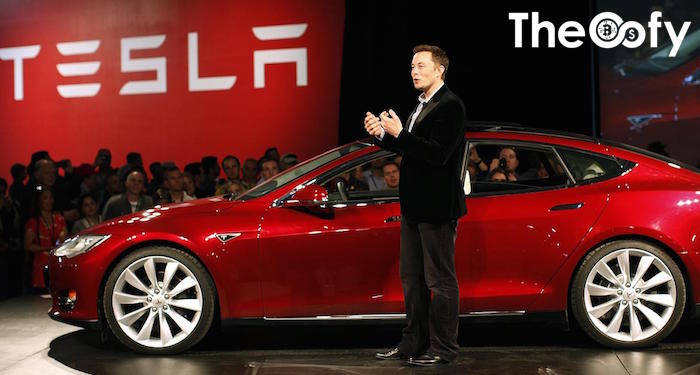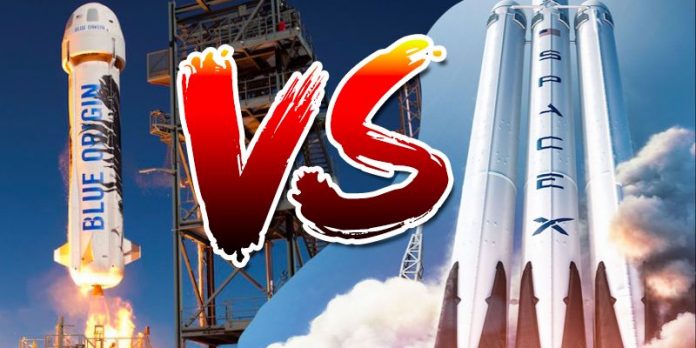Jeff Bezos, the founder of one of the world’s biggest online stores, Amazon, talked about his passion project on an event that took place on last Wednesday, February 20th.
Rather than talking about Amazon and his other projects, Jeff Bezos chose to present the progress of his latest passion project called Blue Origin.
Blue Origin might be one of the biggest milestones set by Bezos by far and it includes the development and creation of the project’s new rocket dubbed New Glenn.
In one of his recent interviews, Jeff Bezos stressed out that New Glenn will be able to compete with SpaceX, developed by Elon Musk, adding that New Glenn will be made to represent a fully operational unit for national security contracts and space missions.
Table of Contents
Elon Musk’s SpaceX vs Jeff Bezos’ Blue Origin
As Jeff Bezos explained in the publication for Space News, Blue Origin project should create New Glenn rocket that should be able to compete with SpaceX by Elon Musk. As Bezos explained in his publication, providing some key insights into his latest project, the team is currently working on a rocket called New Shepard, while the work on the mentioned rocket should provide the team with all information needed to create a far superb New Glenn rocket.
According to Bezos, New Shepard will be ready to send the first passengers to the trip in space already in the following year of 2019, which should mark a major milestone for the project already in the next months.
The founder of Amazon and the head of the Blue Origin project further added that a lot of subcomponents of New Shepard will be used for developing New Glenn, while the New Shepard utilization will represent a strategic objective to practice before launching and creating New Glenn.
By far, according to the leader of Blue Origin, the testing of New Shepard is going really well.

The weird advantage Jeff Bezos’ Blue Origin says it has on SpaceX
CNET Reported on April 2018 that Jeff Bezos and Elon Musk are billionaires racing to make recyclable rockets. Musk has a big head start, but Bezos’ company is looking for ways to one-up SpaceX.
If you thought those SpaceX drone ship landing pads were cool, Blue Origin says you’re going to love its rocket landing technique. It involves a seafaring ship that’ll catch a returning booster without stopping.
Blue Origin, owned by Amazon founder and current billionaire king Jeff Bezos, revealed Sunday that it hopes to gain a competitive advantage over Elon Musk and his SpaceX Falcon 9 rockets by keeping some motion in the ocean.
During the webcast of Sunday’s eighth test launch of Blue Origin’s New Shepard rocket, host Ariane Cornell filled some time during a countdown hold by talking about the space company’s upcoming New Glenn rocket. New Glenn is a larger launch system that will be able to send satellites and other payloads to orbit, making it a more direct competitor for SpaceX. The Shepard rocket is designed to take adventurous tourists on suborbital flights to the edge of space.
Like the Falcon 9, New Glenn will be able to launch from Cape Canaveral, Florida, and then return to land on a ship at sea, but the Blue Origin ship won’t be parked at a designated landing spot in the Atlantic. Instead it’ll be in motion, plying the waters, even as New Glenn comes in for a landing.
“It’s actually more stable than a barge out there, which means that we can actually launch and land in higher sea states,” Cornell explained, throwing some not-so-subtle shade at SpaceX. “It means we can have a more reliable schedule for our customers.” Cornell works for Blue Origin in business development and strategy.

Why you shouldn’t compare Blue Origin’s rocket landing to SpaceX
TheVerge reported that the New Shepard and the Falcon 9 have very different designs, which stem from their very different mission goals. SpaceX’s Falcon 9 rocket is meant to launch payloads — such as satellites and cargo — into orbit around Earth and beyond. It’s why the rocket’s shape is so thin and tall; it creates less drag on the vehicle, allowing it to break free from the atmosphere more easily and go deeper into space. But such a shape also makes it much harder for the rocket to land upright back on Earth. The engines on the bottom of the rocket help to orient it vertically during descent, but it’s almost like dropping a lead pipe from the roof and having it land on its end. The rocket is prone to tilt and fall over.
THE NEW SHEPARD AND THE FALCON 9 HAVE VERY DIFFERENT DESIGNS
The New Shepard isn’t meant to go as far up as the Falcon 9, however, which is echoed in the rocket’s shape. The vehicle is only designed to take people to sub-orbital space for about four minutes. An object at this height isn’t going fast enough to make a full rotation around Earth, so it hasn’t quite broken free of the bonds of the planet’s gravity and will eventually be pulled back down to the surface. Because New Shepard doesn’t need go to the same heights as the Falcon 9, its shape doesn’t need to be as tall and thin. Blue Origin’s rocket sports a thicker and shorter structure, making it a tad easier to land vertically — albeit a still challenging task.
To be fair, the part of the Falcon 9 that SpaceX is trying to recover doesn’t actually reach orbit, either. The company is only looking to land the first stage of the vehicle — the long rocket body that houses the main engines and most of the fuel. This section breaks apart from the rest of the rocket in sub-orbital space before falling back to Earth. Yet it reaches an ultimate height of 124 miles, twice the height of the 62-mile height at which New Shepard starts falling. And since the Falcon 9’s ultimate goal is to achieve orbit, the first stage is traveling at a much greater speed than New Shepard when it begins its descent to the ground. New Shepard reaches a maximum velocity of Mach 3 during its trip, whereas the Falcon 9’s first stage reaches between Mach 5.5 and Mach 7.5 before falling.
The Falcon 9 also has a lot more thrust and energy behind it when it’s going into space, too. A whopping 1.5 million pounds of thrust lift the vehicle off the ground, compared to the maximum thrust of 100,000 pounds that New Shepard achieves. That means the Falcon 9 has a lot more force behind it as it starts its final descent. If these differences weren’t enough, the Falcon 9 is also oriented completely different at the time of descent. It’s at a horizontal configuration compared to Earth, meaning the company must do a complicated flip maneuver to get the Falcon 9 in position for landing. The New Shepard remains mostly vertical for the entirety of its flight.
Overall, comparing sub-orbital spaceflight to orbital spaceflight is pretty controversial. It’s almost like comparing mountain climbing at the gym with climbing Mount Denali. The types of landing techniques involved can hardly be viewed on the same playing field, since New Shepard and Falcon 9 are drastically different vehicles.
COMPARING SUB-ORBITAL SPACEFLIGHT TO ORBITAL SPACEFLIGHT IS PRETTY CONTROVERSIAL
“Blue Origin has designed their rocket to be reusable from day one. Elon is trying to take the first stage of his rocket, which was expendable, make some tweaks to it, and then make it reusable,” said Charles Miller, president of NexGen Space LLC. “These are very interesting differences between how Musk and Bezos are approaching their rockets.”
A FIRST? DEPENDS ON YOUR DEFINITION
Blue Origin’s achievement has been lauded as the first landing of a commercial sub-orbital rocket, but it’s only a “first” depending how you actually define the word “rocket.” These days, the term is typically used to describe the cylindrical, vertical take-off vehicles that transport objects into space — like the Falcon 9 or the United Launch Alliance’s Atlas V. If that’s how you use the term rocket, then yes, this is the first time a rocket has reached sub-orbital space and then landed vertically on the ground afterward.
IT’S ONLY A “FIRST” DEPENDING HOW YOU ACTUALLY DEFINE THE WORD “ROCKET”
However, “rocket” has been used to describe any vehicle with a rocket engine. If that’s your definition, then Blue Origin isn’t the first commercial company to build and successfully test a reusable sub-orbital rocket. Scaled Composites had them beat on that with its SpaceShipOne spaceplane, which won the Ansari X Prize in 2004. That vehicle didn’t launch vertically, though. It was transported to a high altitude by a carrier aircraft, where it then launched into sub-orbital space.
Predating them all is the North American X-15, an experimental rocket-powered aircraft used by the US Air Force in the 1960s. Like SpaceShipTwo, the X-15 was also designed to be carried to a predetermined height and then launch into sub-orbital space, which it did twice.
Regardless of what the word rocket means to you, Blue Origin’s achievement is still impressive. Landing a rocket vertically after it reaches the edges of space is an incredible challenge that no one has quite mastered before. The feat belongs in the record books, though it’s unclear the exact record that Blue Origin now holds.





Suborbital flights to Mach 3 can’t be compared to orbital operations that require Mach 25 – the former have more in common with conventional aircraft. A better analogy between the two would be snorkeling to nuclear submarines…